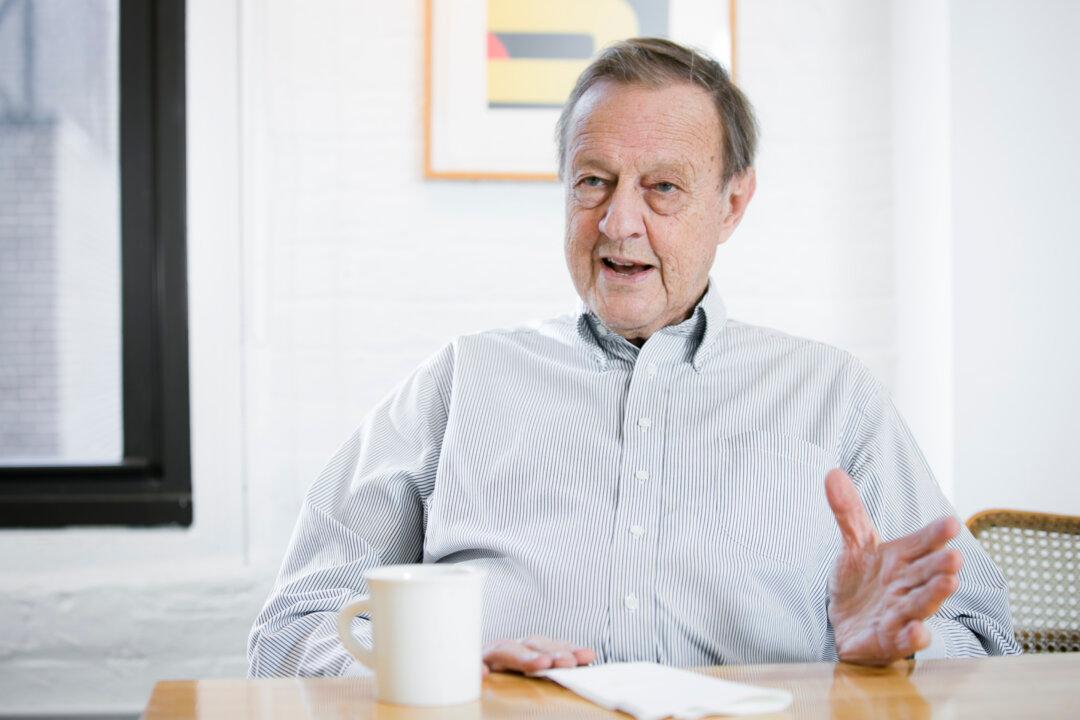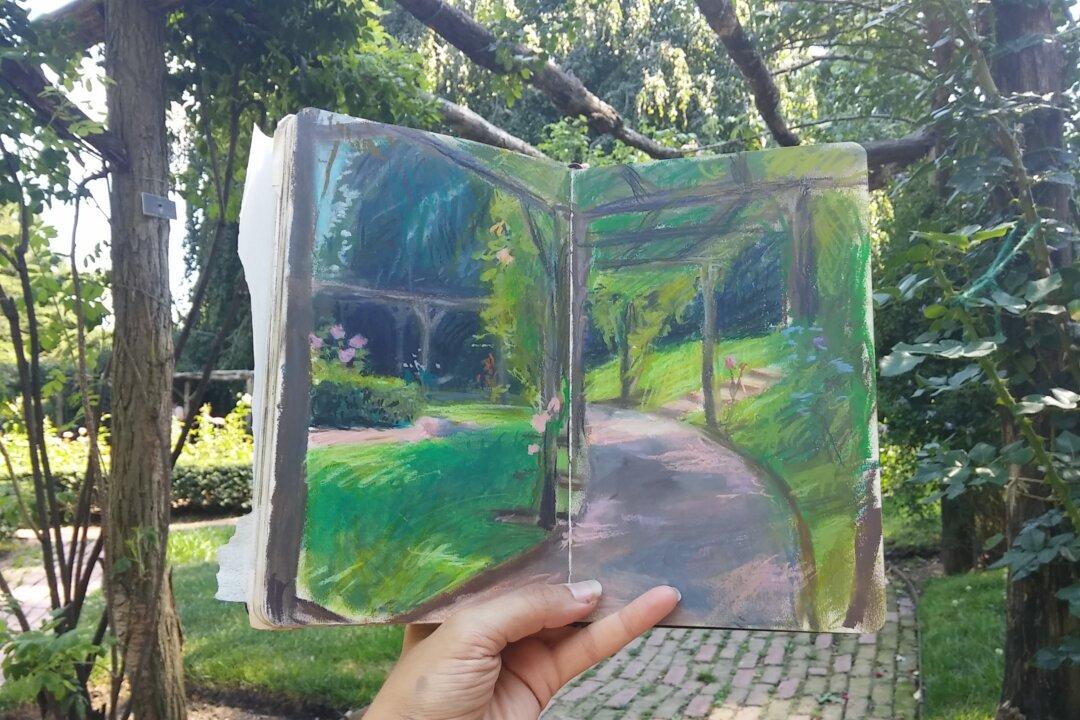NEW YORK—When work is play and play is work, there’s no reason to stop working. “There’s no possibility of even thinking of a better job,” said Ivan Chermayeff—a man who has influenced visual culture across the world in ways we take for granted every single day.
The 82-year-old Chermayeff has designed hundreds of unforgettable images, including logos for PanAm, MoMA, Showtime, Harper Collins, Shinsegae, the U.S. Bicentennial, and the number 9 sculpture on West 57th Street. He has also designed numerous exhibits and has created posters for almost every museum in New York City.
The firm he co-founded, Chermayeff & Geismar, has created many of the world’s most iconic brands—instantly recognizable—including: NBC, PBS, Chase, Mobil, National Geographic, and hundreds more. It’s difficult to walk down a few city blocks without seeing a logo the firm has designed.
During his half-hour of downtime—when Chermayeff is not talking with clients or doing other scheduled tasks—he loves cutting and pasting disparate images to make collages.
“Collages are just new connections of visual things,” Chermayeff said.
Fragments and Continuity
But while growing up, life for Chermayeff may not have felt so connected. His father Sergei Chermayeff was a refugee from the Caucasus who had learned from experiencing the Bolshevik Revolution that it would be best for the family to leave England in 1940 before the Germans invaded.
The family arrived first in Canada, and six months later in the United States, at the tail end of the Great Depression. Chermayeff was 8 years old and his younger brother Peter was 5. Whenever he visits England, he can easily slip back into a British accent.
His father was fluent in five languages and survived by being a very good talker. He traveled around the country wherever opportunities presented themselves to lecture and teach as a visiting lecturer and critic of architecture.
As a result Chermayeff went to 24 different schools in Chicago, San Francisco, New Orleans, Pennsylvania, and several other places he can’t remember. Sometimes he was in a school for only two weeks.
“Well, that’s very dramatic,” he said with an American 1940s accent, reminiscent of Hollywood stars of the silver screen. “It means I had no friends when I was young.”
As a child he had no other choice but to adapt to rapid changes—a constant stream of new faces and places.
Eventually his father became established as a professor of architecture in New York, as the president of the Institute of Design in Chicago, and then as a professor at Harvard and Yale—the same institutions where Chermayeff studied, and in the same order.






